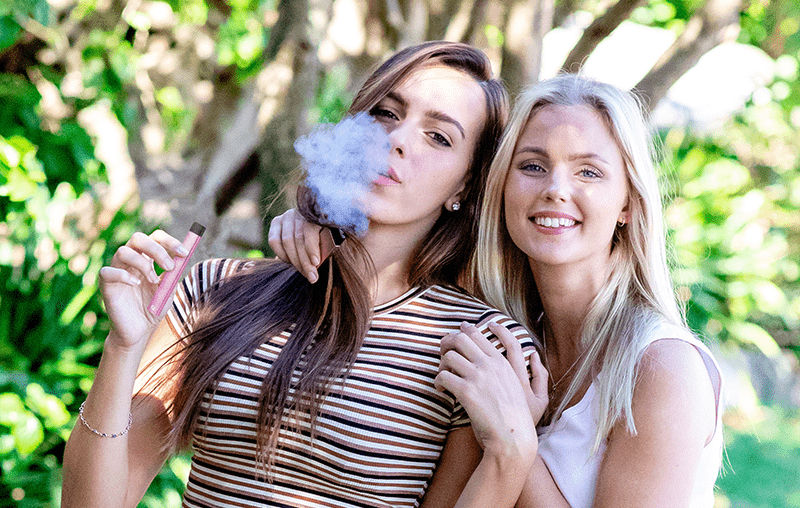Vape Tricks
Mouth to lung and direct to lung vaping
Mouth to lung and direct to lung vaping: a comparison
There are two vaping techniques you could explore: mouth to lung (MTL), and direct to lung (DTL).
Here we explore how each vaping method works, to help you see which one’s right for you.
Mouth to lung vaping
What is mouth to lung vaping?
MTL vaping is when you fire up your device, draw as much or as little vapour as you like into your mouth, and then inhale it from your mouth into your lungs. It is a similar process to smoking a cigarette.
What are the pros and cons of MTL vaping?
As it is similar to a cigarette drag, the MTL method is a good choice for recent converts. It means you can quickly get comfortable with vaping without having to learn a whole new technique.
MTL vaping is focused less on cloud production, and more on delivering a strong flavoured vape, as you hold the vapour in your mouth before inhaling. It’s perfect for short, discrete puffs.
What equipment do I need for MTL vaping?
Many MTL vapers like to keep things simple. You don’t need a big, powerful device but you can vape with a pocket-friendly vape pen with a power rating of 20 watts or less. You’ll find that most of these devices use standard coils with a resistance of more than 1.0 ohm.
For the juice, the base of most e-liquids is made up of a combination of two ingredients: propylene glycol (PG) and vegetable glycerin (VG). Of these, it’s mostly PG that carries the flavour. VG is thicker and slightly sweeter, and its main job is to help create bigger clouds. Although it’s all a matter of personal preference, some MTL vapers prefer juices with a relatively high PG content for a flavoursome vape: e.g. 70% PG / 30% VG.
Direct to lung vaping
What is direct to lung vaping?
With DTL, you don’t take a puff and then let it linger in your mouth. Instead, you fire up your device and inhale the vapour straight into your lungs in a smooth, continuous action, before exhaling.
What are the pros and cons of DTL vaping?
Vapour production is the most obvious advantage of DTL: if you want to create thick clouds, then this is the technique for you.
The ‘throat hit’ is the other signature feature of this style because you draw the vapour in a single motion, it flows into your lungs at a relatively high temperature, catching the back of your throat along the way. Lots of DTL vapers really like a strong throat hit, as it imitates the sensation of strong tobacco smoke. But if you find it a little too harsh, there are ways to reduce it. For instance, try loading your device with a mellow juice flavour (e.g. a berry mix as opposed to a strong citrus or menthol). Also, try going one or two levels lower with the nicotine content of your juice (e.g. 0.6 mg instead of 1.2 mg).
What equipment do I need for DTL vaping?
For DTL, you need a device that’s capable of heating up large volumes of juice relatively quickly. If you attempt it with a low-powered kit, you can burn through your coils too soon, resulting in a sour tasting vape.
DTL vapers use higher wattage devices (20W+), usually fitted with sub-ohm coils (i.e. coils with a resistance of less than 1.0 ohm); this enables increased vapour production. For big clouds you also need plenty of air passing through the device, which is why DTL/sub-ohm tanks tend to have an airflow adjustment mechanism.
In terms of juice, focus on liquids with a high VG content (50% VG+), it converts to thicker clouds and the slightly sweeter juice base helps to prevent the DTL throat hit from being too harsh.
Choosing your vape technique
If you want a quick, tasty and easy-to-manage alternative to smoking, then MTL vaping makes sense. DTL is definitely worth exploring if big cloud production is your preference
Want to know more about how to make your vape experience even better? Explore our ZiiP Lab blog for more information.
